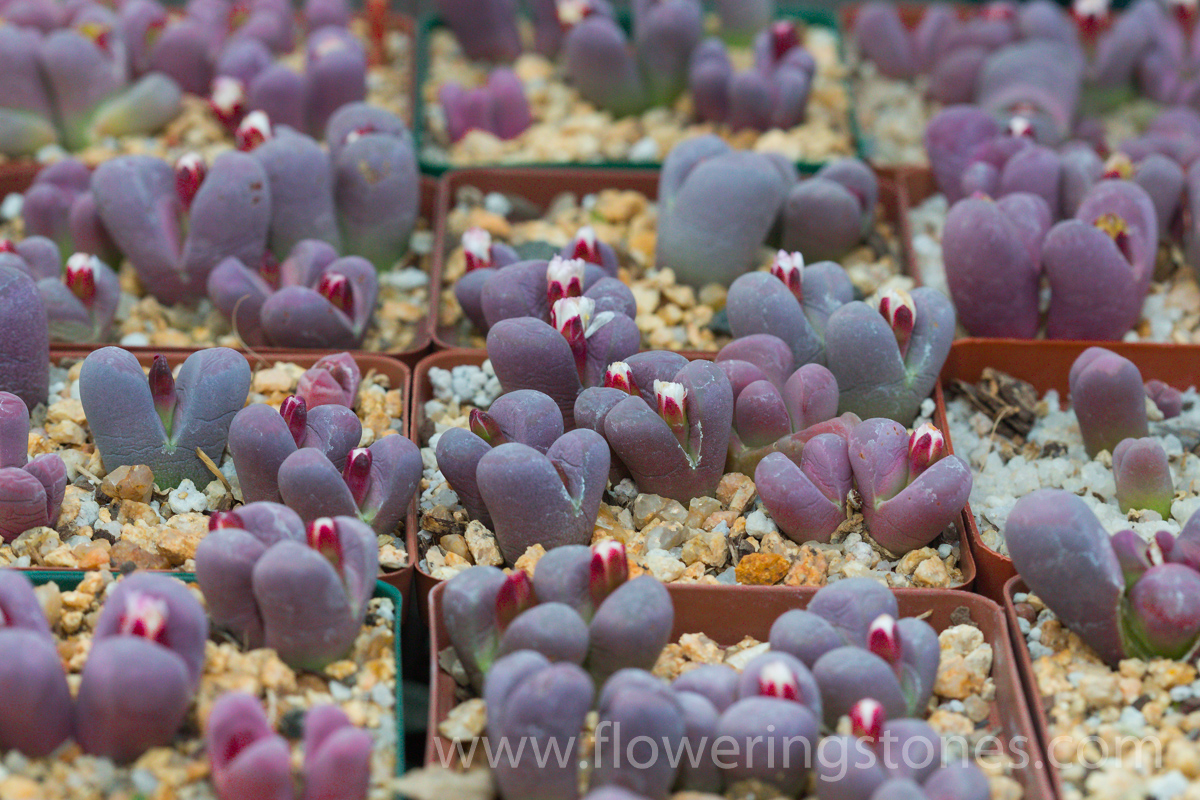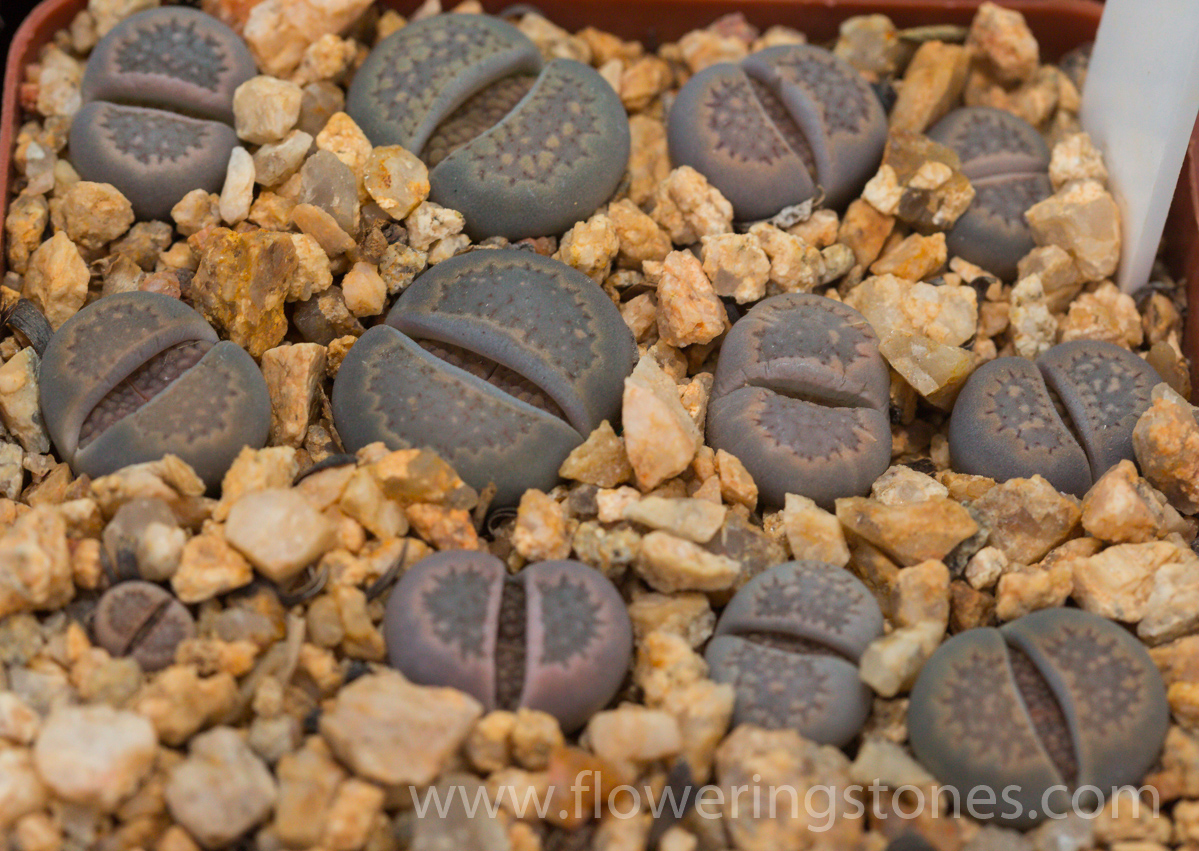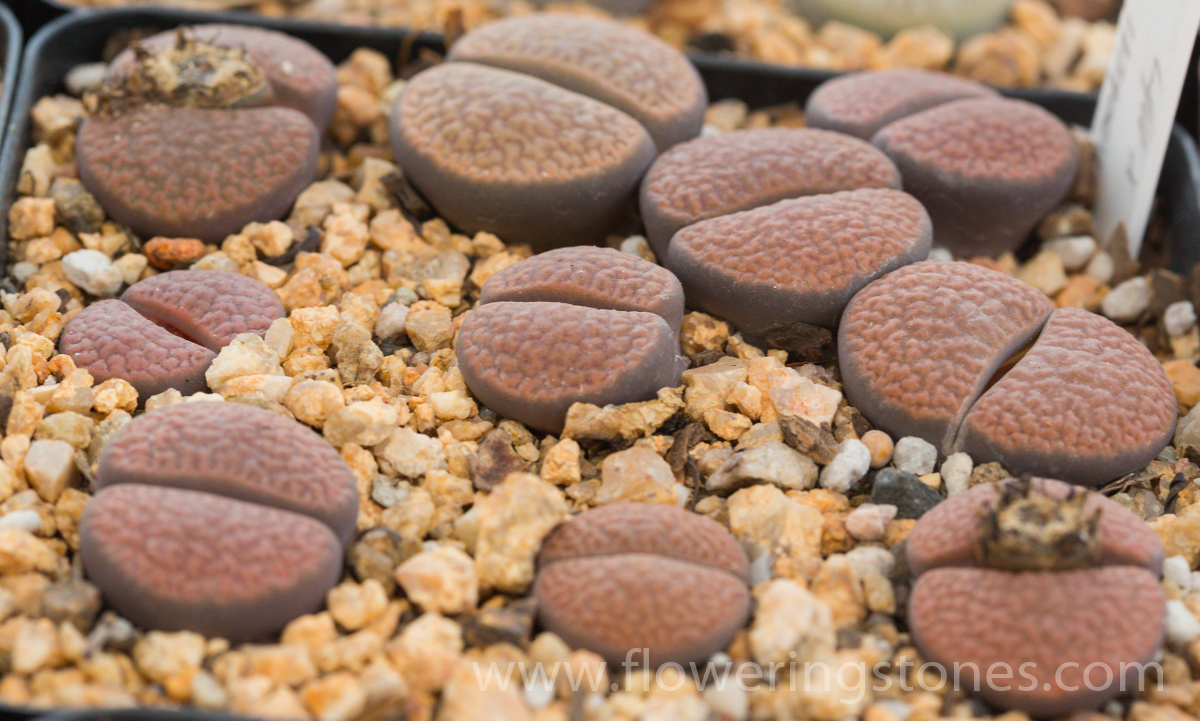I knew this monthly thing would get to me. The other thing I regret is that I started calling it Mesembs in …. I reality it is about Lithops. Describing what is happening to the other mesembs in the collection would probably take too much time since all of them are doing their own unique things. So for now Mesembs equals Lithops. Some of you asked for these updates so you better read it – I will ask you questions later to see who paid attention.
Temperatures have dropped seriously. We had few exceptionally cold nights and the one greenhouse recorded temperature of -4 Degrees Celsius. It was cold enough for long enough so that a dripping tap faucet created a 20cm stalagmite. No plants were harmed in the process.
Plant in the bigger hot green house were less fortunately. Some stood too close the windows on the eastern side and started to show damage, although not serious enough to kill the plants. The most severely affected was Diplosoma retroversum and that got some cold damage. Mitrophyllum and Monilaria was borderline and Jensenobotrya also decided to show their disapproval. Chereidopsis, Faucaria, Lithops, Titanopsis, Aloinopsis, Conophym, Sceletium, Argyroderma, that was standing there did not give a damn.
The Lithops are easy customers in June. So much so that they are boring because there is very little I can do to them. The only interesting part is peaking to see which Lithops heads are going to have twinsies are doubling up. More flowers next year! Another interesting thing is to see what patterns would persists. One sometimes notice peculiar patterns on plants and very selectively pollinate them just to see it disappear with the next leave renewal.
In terms of watering, most Lithops probably had a misting to the amount of 1mm of precipitation or less maybe on two or three occasions – not enough to be convicted of mistreatment of plants should you decide to go and report me to the Watering-while-splitting task unit of the Lithops police.
Lithops optica cv ‘Rubra’ (featured image of this post) is setting up a nice show. At one stage before opening, I counted 72 flower buds! Initially the weather was crap so pollination was delayed. I kept the air exchanges of the greenhouse to a minimum to raise temperatures. The last couple of days I managed to pollinate quite a few.
Some experiments that were starting to is compare the response of seedling transplanted during these times. We hope to see the effect of total satuaration, a little top water, a little bottom water compared to dry transplanting in a few months.
Many new growers often wonder what to expect from splitting. The gallery attached (apart from providing some photo tax) attempts to show the different ways plant are splitting. Lithops aucampiea and Lithops pseudotruncatella is the most secretive. They will sometime absorb the entire old body without showing the new leaves. Others like Lithops fulviceps and Lithops karasmontana quick split open the old leaves and then recycle them.
Below is a gallery of random Lithops in my collection I photographed this afternoon (24th June 2020). From this you might be able glean what substrate I like to use. If you want to recommend me strictly re-potting to 90:10 pumice organic material go play with your grow lights I will definitely take it to heart. You will see that is not 100% consistent but you will be able to see the similarities. You should be able to see how far the plants have progressed through splitting and what the typical variation is within species and between species. You will also the how retracted the plants are. They are not planted like this but this how they decide to grow for the light levels I provide them.













































































Thank you so much for this blog! So well written and entirely inspiring for new growers. Exactly what i was look for.
LikeLike
Just discovered your blog and started following it. It’s really a valuable resource. (P.S. give a look to your instagram and facebook links, they seem not working properly).
LikeLike